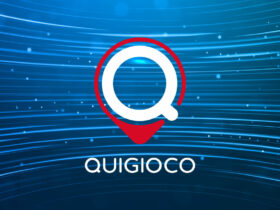One of the first implications of the social internet was the proliferation of websites with the aim of connecting people with common interests, either to make friends, or to have a chat in freedom, or also to deepen the knowledge with meetings or relationships.
In the last twenty years, communities of this type have proliferated like mushrooms, and well before the explosion of social networks like Facebook or Instagram! But in a nutshell what are the differences between these different types of portals? What services do they offer? Who are they aimed at? Today we try to answer these questions by analyzing the history of digital communication of the last twenty years and comparing some of the main players in the sector.
The birth of IRC Chats
The beginning there were the chats. And the Internet users said: “cool”! At the end of the 80s, during the Gulf War, the Internet Relay Chat protocol was developed to allow direct communication between two or more users in discussion rooms (the famous “rooms”, also called “channels” ). At the time, no one knew that this new technology in a few years would be cleared throughout the world, giving rise to immortal communities that still involve millions of users today. Yes, because the old webchats are still very popular today. Especially within some specific niches, such as the LGBT universe, erotic enthusiasts or the over 40 friendships sector. One of the most virtuous examples in the context of chats is chatover40.it, a chat without registration frequented by thousands of users every day, who access channels to chat with strangers while maintaining their anonymity. And this is precisely the feature that makes webchats a unique and different environment than social media or dating apps. In chat you can be yourself without fear of judgments, you can meet people beyond appearances, you can keep your identity secret but at the same time bare your soul. In some ways, and for some people, chats continue to be the only virtual environment today in which you can really be yourself.
The chats were born as environments in which you can chat about everything and more. In the 1990s, there were chats for every niche. Fans of football, music, video games, manga, young and old kids. Everyone could find a specific channel for their passion or need. Obviously, chats were also born whose declared purpose was to encourage real encounters between people looking for new loves or simply a night of passion.
Dating sites and dating apps proliferate
When web surfers realized that the internet could be a great way to hook up, the dating site craze exploded. To date there are thousands of them, but the leader of the Italian market has been and continues to be Badoo.com.
Dating sites generally require registration and sometimes financial fees to activate certain additional services. They offer a more vertical service than chats and satisfying the specific need to relate to other people. Some sites, such as meetic.it, offer match systems based on hobbies, lifestyle, work, etc. and favor the birth of serious relationships. Other sites, such as the famous tinder.com, promote casual encounters by creating matches based on physical appearance and mutual attraction. Finally, there are apps like grindr.com that offer an exclusive service for the LGBT universe.
Social Networks break out
Finally, let’s talk about Social Networks, which represent a sort of digital evolution of the classic meeting places that have always existed since the birth of mankind! They are virtual places within which people can “network”. Get in touch, build friendly, loving, working relationships. When Facebook arrived in Italy it started a social revolution. From that moment on, every person in the world started building a digital identity, uploading photos, posting their interests and friendships. Facebook simply kicked off, but it was followed closely by various social networks such as Twitter, Instagram, Linkedin, Tik Tok and more. Each with its own target, its own logic, its own field of application. Twitter, for example, it has established itself as the social network of opinions, the preferred medium for journalists, politicians and intellectuals, eager to “have their say” on what is happening in the world. Instagram has become the happy island of all of us, a virtual environment where everyone can show the best side of themselves, the most exciting aspects of their life. A magical place where everyone is apparently fine, everyone happy, everyone traveling, everyone eating fantastic food and listening to cool music. Linkedin, on the other hand, has established itself as the place to network to build virtuous working relationships and partnerships.
In short, chats, dating sites and social networks have revolutionized our lives and continue to define the way we relate to each other today. Nostalgics accuse these means of having ruined relationships and disintegrated our “humanity”. Progressives, on the other hand, believe that only through the new means of digital communication will we be able to build a more cohesive and stronger society that can lead the world towards a new era.















